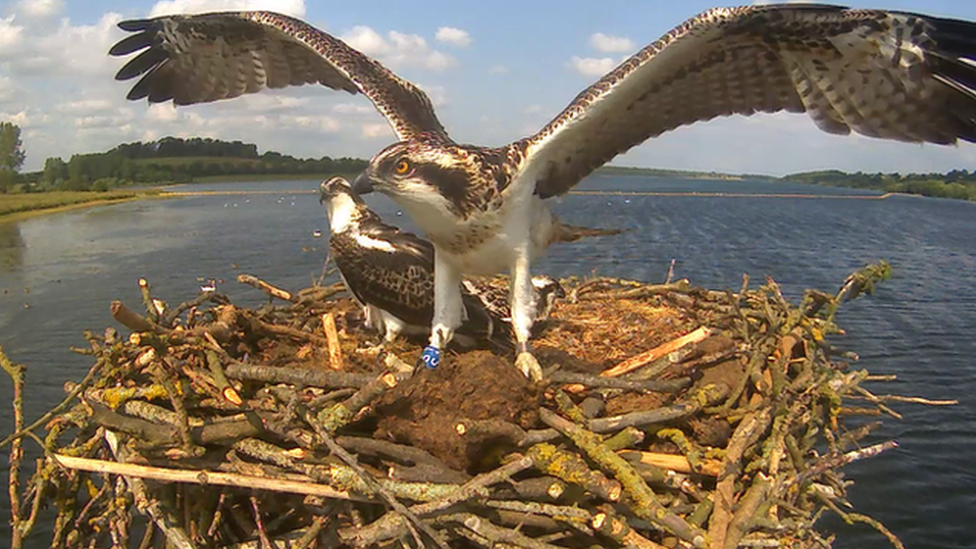Rutland Osprey Project celebrates after 200th chick fledges
- Published
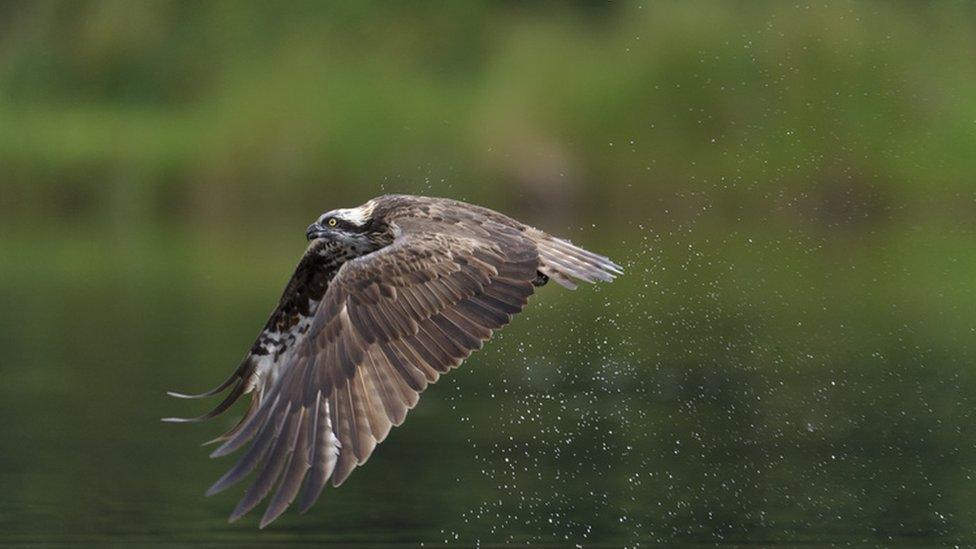
The Rutland Osprey Project was set up 25 years ago
A landmark breeding programme for rare birds has reached a milestone after seeing its 200th chick fledge.
The Rutland Osprey Project was the first place in England where ospreys bred in 150 years, and has helped to restore the numbers of the birds.
A female chick fledged in July bringing the figures up to 200.
The project was set up 25 years ago as ospreys had become extinct in England but organisers say the population is now self-sustaining.
Conservators said the birds were proof the osprey colony had become "well-established"
The project at Rutland Water Nature Reserve was launched in 1996 by Leicestershire and Rutland Wildlife Trust, Anglian Water and the Roy Dennis Wildlife Foundation.
It invites visitors to come and watch the "extremely rare" birds after they arrive in spring through to their migration back to Africa in the autumn.
The project started translocating birds from Scotland, collecting 64 osprey chicks from Scottish nest sites and releasing them in Rutland between 1996 and 2001.
The 100th chick at the site fledged back in 2015, with more birds returning every year.
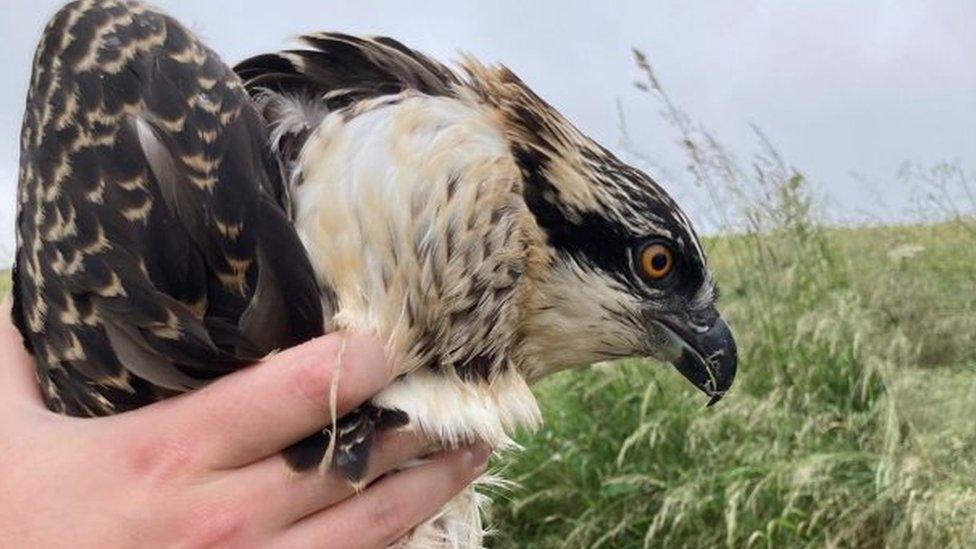
The 200th chick fledged in July and was ringed with the number 360 to identify her
Last year the trust also saw interest in its webcams boom as enthusiasts kept track of mating pairs during the coronavirus lockdowns.
Abi Mustard, osprey information officer for Leicestershire and Rutland Wildlife Trust, said the 200th chick came during "an important and exciting year".
"It's brilliant that we now have a self-sustaining population of ospreys in England," she said.
"The success of the [scheme] is not only due to the resilience of the birds themselves, but also to the hard work, support and dedication of everyone who has been involved - we have a wonderful team of volunteers, staff, local landowners and supporters who have helped facilitate these incredible achievements."

Ospreys had become extinct in England but the population is now "self-sustaining"
The project has also helped the birds to breed in other parts of England and Wales.
Ospreys are now found breeding in Cumbria, Northumberland and north and west Wales, and the project is working with Suffolk Wildlife Trust to bring breeding osprey back to East Anglia.
Meanwhile, Essex Wildlife Trust has erected nesting platforms around the Abberton Reservoir to attract the birds.

Follow BBC East Midlands on Facebook, external, Twitter, external, or Instagram, external. Send your story ideas to eastmidsnews@bbc.co.uk.
- Published30 May 2020
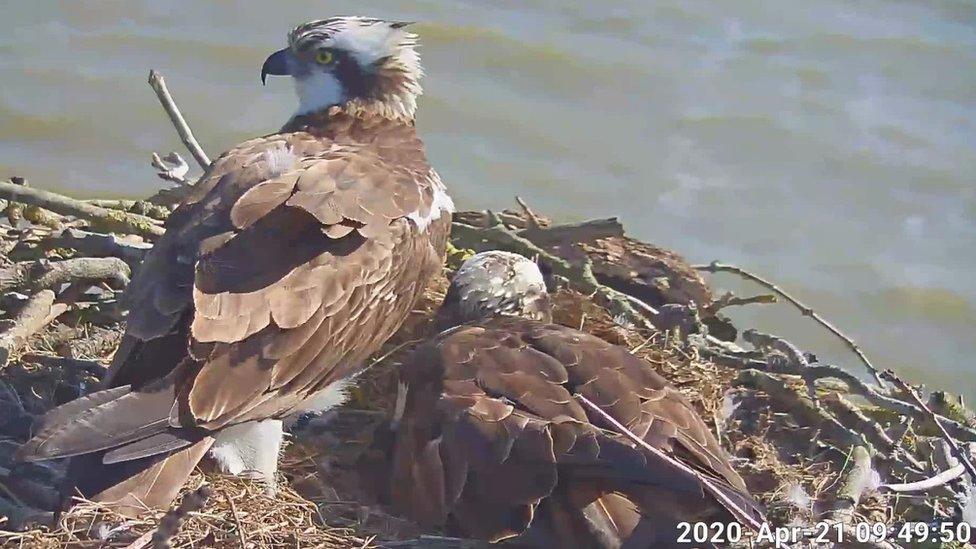
- Published27 July 2019
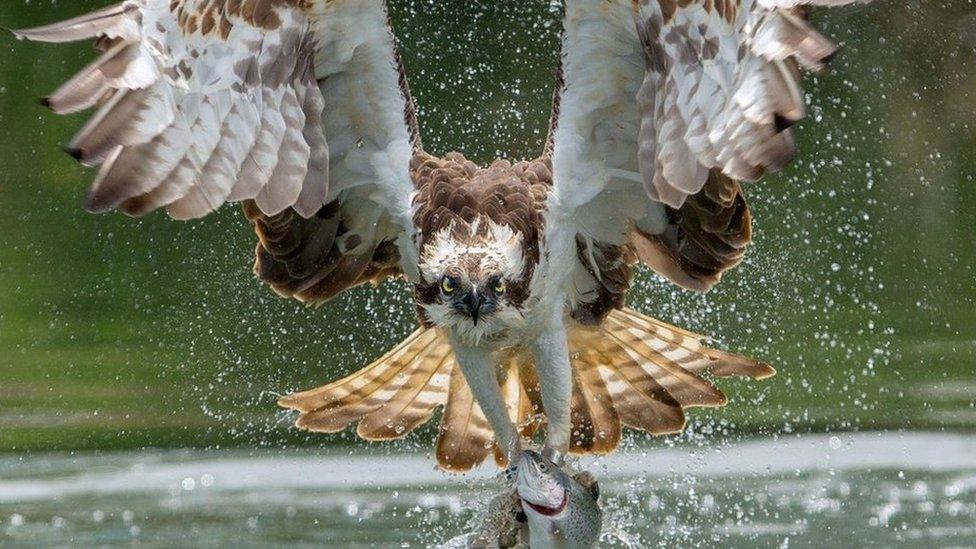
- Published22 July 2019
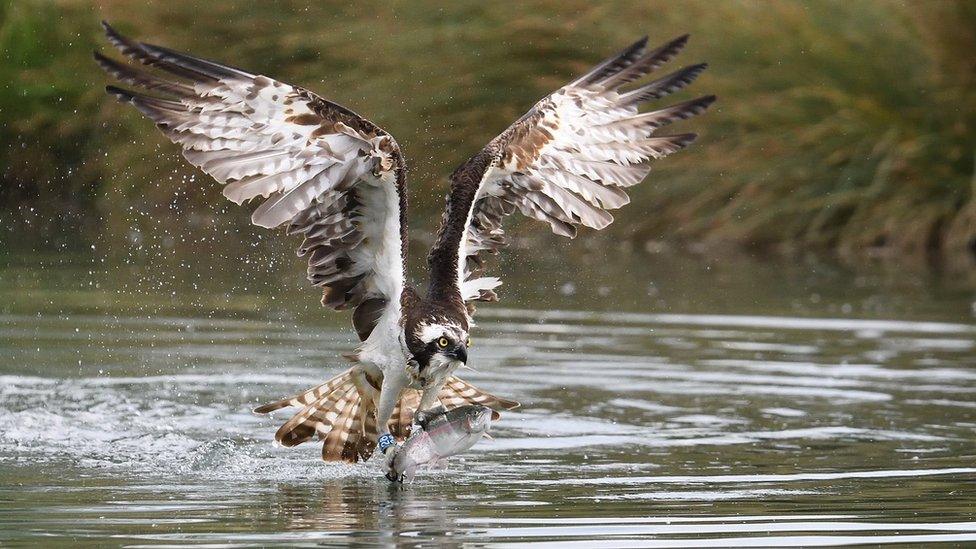
- Published6 July 2016
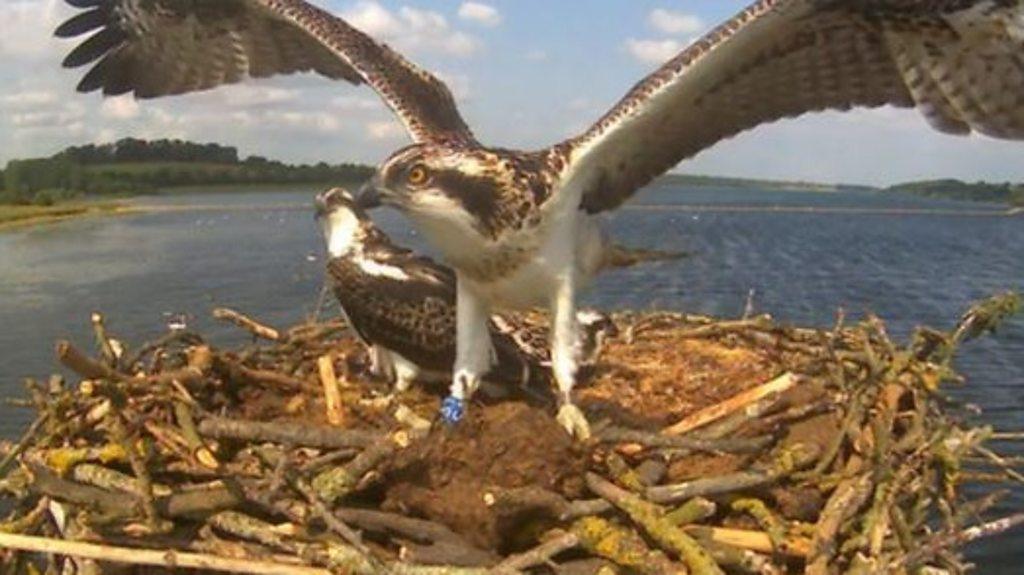
- Published6 July 2016
